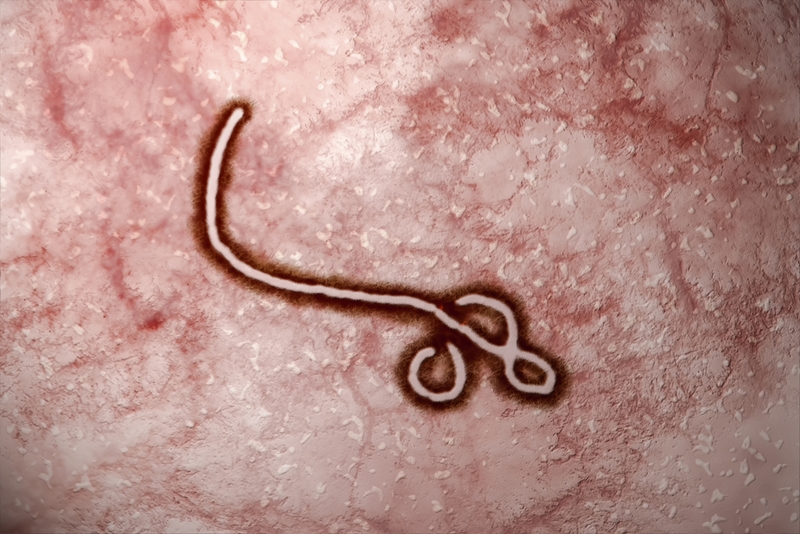Researchers engineer antibodies to fight Ebola
Researchers at the U.S. Army Medical Research Institute for Infectious Diseases and Albert Einstein College of Medicine may have discovered a new treatment for Ebola, reported Stat. The research team produced antibodies that successfully protected lab mice from the Sudan and Zaire Ebola virus species. Collectively, these two versions of the virus are responsible for 95 percent of all Ebola-related deaths from 1976 to 2012. According to the World Health Organization, a virus from the Zaire species caused the latest outbreak in West Africa.
For their study, published in the journal Scientific Reports, the team designed two bispecific monoclonal antibodies, or BismAbs, and performed binding and neutralization studies to see if the proteins would attach themselves to and destroy the Ebola virus. After observing favorable results, the researchers injected the BismAbs into two lab mice and exposed the animals to the Sudan and Zaire Ebola viruses. The BismAbs protected the mice from both species of the disease.
“While this result is encouraging, the therapy must first be tested in larger animal models (including non-human primates) before we have any idea if they could be used for human therapy,” Jonathan Lai, Ph.D., a biochemist at the Albert Einstein College of Medicine and the study’s author, said in an interview with Stat.
From stopgap to cure
A similar Ebola treatment produced in 2013 was a moderate success.
In October of that year, Canadian researchers developed an antibody-laced drug called ZMapp that warded off the Zaire species of Ebola in primates, reported Scientific American. A year later, international aid groups began testing ZMapp on Ebola patients in West Africa. According to The Washington Post, the drug successfully stabilized many of its recipients, including two Americans.
In December, the World Health Organization declared Guinea Ebola-free, reported The New York Times. Officials treated the West African country’s final patient, a three-week old girl, with ZMapp.
However, the drug couldn’t stop the disease in its tracks. In most cases, ZMapp simply expanded the treatment window.
Now, with the Ebola epidemic under control, researchers search for an actual cure.

Trial and mostly error
So far, scientists have failed to create an effective treatment or cure for the deadly disease. In December 2014, infectious disease specialists began transfusing West African Ebola patients with plasma from survivors, reported the journal Nature. They hypothesized that the treatment, a type of convalescent blood therapy, would prompt Ebola patients to produce disease-fighting antibodies that could wick away at the virus.
The results of the trial were published this past December in New England Journal of Medicine, reported Reuters. The treatment was ultimately a failure. However, there is still hope.
Researchers were unable to measure antibody concentration in the plasma used during the study because their field research facility lacked the required equipment. They say the study might have taken a different turn if they had been able to ensure that every patient received plasma with high-levels of antibodies.
“They hypothesized that the treatment would prompt Ebola patients to produce antibodies that could wick away at the virus.”
Earlier this month, the research team sent the survivor plasma and blood samples from individuals who underwent convalescent therapy to a lab in France, reported Al Jazeera America. Scientists there will run comparative analysis on the samples to see if the therapy had any effect.
“This could go in two directions. One is that survival and changes in viral load correlate with the amount of antibody present, which will provide strong evidence of a causal link,” Dr. Johan van Griensven, an infectious disease specialist at the Institute of Tropical Medicine and the study’s lead author, said in an interview with the news organization. “That would mean we should stockpile plasma.”
A false glimmer
The researchers who participated in the BismAbs trial are cautiously optimistic. Some are even envisioning a virus-free future.
“By creating engineered antibodies that have the ability to bind immunologically distinct viruses, you create a therapy that has the ability to respond to an outbreak without needing to know the actual causative pathogen,” John Dye, Ph.D., chief of viral immunology at the U.S. Army Medical Research Institute of Infectious Diseases and member of the research team, said in an interview with Live Science.
However, Lai concedes that many promising trials involving disease-fighting antibodies fizzle out once they enter the primate testing phase. Thomas Geisbert, Ph.D., an immunologist and Ebola expert at University of Texas Medical Branch, has seen his fair share of such studies.
“The mouse model has been historically notorious for giving false results and false hope,” Geisbert said in an interview with Stat. “I’ve got shelves full of things that protect mice against Ebola but don’t work on monkeys.”



